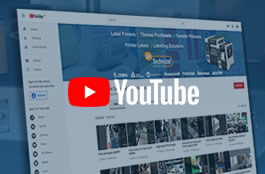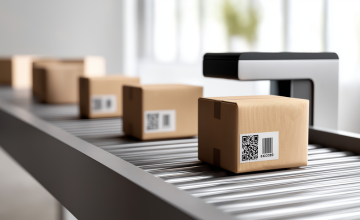Vision Systems in Automated Labelling: The Future of Quality Control

Vision Systems in Automated Labelling: The Future of Quality Control
In 2025, one of the biggest shifts in the labelling industry is the rapid adoption of vision systems. As production speeds increase and customer expectations rise, manufacturers across pharmaceuticals, food, logistics and consumer goods are under more pressure than ever to ensure labels are correct, compliant and perfectly applied. A single misprinted or mis-applied label can cause recalls, fines, or supply chain delays - making quality control absolutely critical.
Why Traditional Quality Checks Are No Longer Enough
For years, label inspection relied on manual checks or basic sensor-based systems. While effective to a point, they struggle to keep up with the complexity and speed of modern production environments.
Common issues include:
- Incorrect or unreadable barcodes
- Missing or wrinkled labels
- Incorrect artwork versions
- Print quality defects
- Wrong product information or date codes
- Inconsistent placement across high-speed lines
As product volumes grow and regulations tighten - especially in pharma, cosmetics and food - businesses are turning to advanced imaging to reduce risk.
How Vision Systems Improve Labelling Accuracy
Vision systems combine high-resolution industrial cameras, machine learning algorithms and real-time processing to analyse every label as it passes through the line.
These systems can:
1. Detect Micro-Defects Instantly
Identifying print imperfections invisible to the human eye, such as faint lines, ribbon wrinkles and low contrast text - ensuring compliance with GS1, FDA and MHRA requirements.
2. Verify Label Placement with Pixel-Level Accuracy
Cameras measure exact label position, size and orientation. If a label is off by even half a millimetre, the system flags it instantly.
3. Read and Validate Barcodes Using Machine Learning
They read barcodes under challenging conditions - curved surfaces, reflective packaging, high speeds - and verifies them against expected values.
4. Identify Wrong Label Versions
By learning what each label should look like, the vision system recognises incorrect SKUs, outdated artwork, or mismatched product labels.
5. Prevent Defects Through Predictive Maintenance
Trend analysis helps identify issues like worn printheads, low ribbon tension or substrate problems before they cause downtime.
The Rise of Integrated Print-and-Inspect Systems
Many clients are now opting for “print-and-inspect” setups where the printer and vision system communicate as one unit.
This offers major advantages:
> Faulty labels are rejected automatically
> Real-time feedback improves print quality
> Mis-applied labels trigger instant machine stops
> Fewer recalls and compliance risks
> Higher throughput with less manual intervention
Combined with modern thermal printers, this is quickly becoming the gold standard in pharmaceutical and high-value manufacturing environments.
Why Vision Systems Are Becoming Essential
Vision inspection is no longer a luxury - it’s becoming a competitive advantage. Businesses adopting vision systems are seeing:
- Up to 90% reduction in labelling errors
- Significant improvements in audit and compliance performance
- Lower operational costs due to fewer reworks
- Faster, safer and more efficient production lines
Looking to Strengthen Your Quality Control?
At BHT Services, we support clients with advanced printing, labelling and verification solutions that enhance accuracy, compliance and operational efficiency.
Contact us today to explore our range of automated inspection stations.











